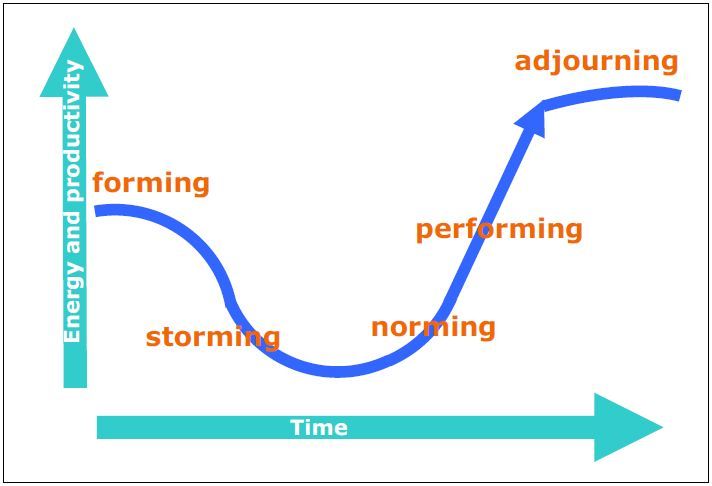Group formation
Group formation refers to how individuals come together to form a cohesive unit, often for a shared purpose. It typically follows stages, with the most widely recognized model being Tuckman’s stages of group development: Forming, Storming, Norming, Performing, and later Adjourning (or Mourning). Here’s a concise breakdown:
- Forming: Individuals come together, often cautiously. They’re polite, assessing roles, goals, and group dynamics. Trust is low, and members seek structure or leadership.
- Storming: Conflicts emerge as personalities clash, roles are questioned, or goals seem unclear. This stage is critical for working through differences but can be chaotic.
- Norming: The group establishes norms, roles solidify, and cohesion grows. Trust builds, and members start collaborating effectively.
- Performing: The group functions at its peak, with clear roles, strong communication, and focus on achieving goals. Productivity is high.
- Adjourning: The group disbands after completing its purpose. Members may feel a sense of loss or closure, depending on the group’s success and bonds formed.
Factors Influencing Group Formation:
- Purpose: A clear goal (e.g., project, social, or task-oriented) drives formation.
- Size: Smaller groups tend to form faster but may lack diversity; larger groups take longer to gel.
- Diversity: Varied backgrounds can enrich ideas but may slow consensus during storming.
- Leadership: Strong leadership can accelerate norming and performing.
- Communication: Openness fosters trust and smoother transitions between stages.






.jpg)
Comments
Post a Comment